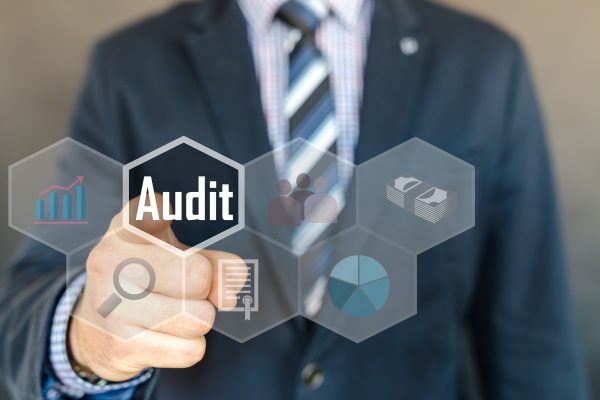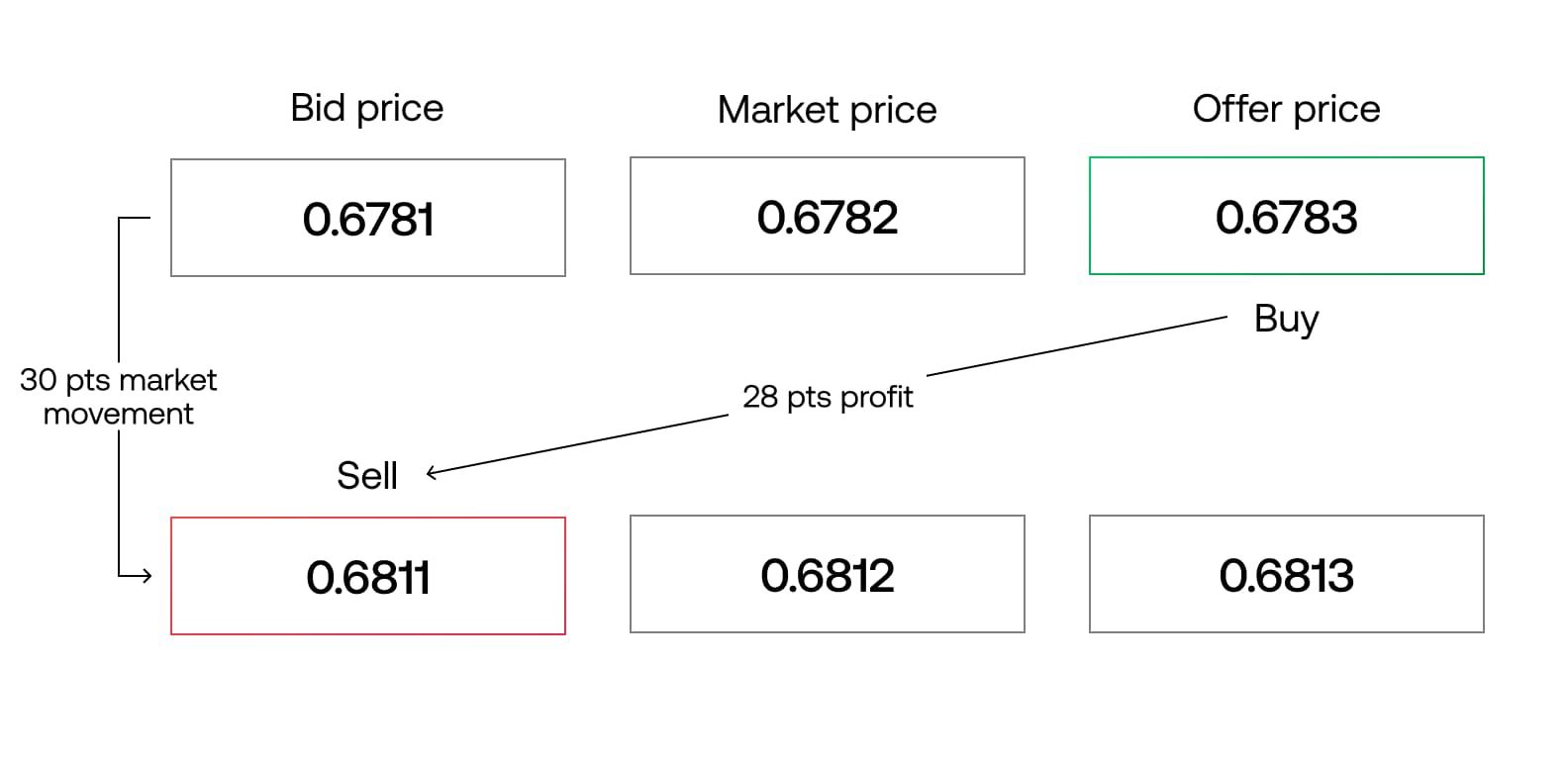

Finance
What Is Control Risk In Auditing
Published: December 28, 2023
Control risk in auditing is a crucial aspect of financial management. Understand its definition and implications to ensure effective risk assessment and mitigation in finance.
(Many of the links in this article redirect to a specific reviewed product. Your purchase of these products through affiliate links helps to generate commission for LiveWell, at no extra cost. Learn more)
Table of Contents
Introduction
Welcome to the world of auditing, where numbers are scrutinized and financial statements are put under the microscope to ensure accuracy and reliability. One of the crucial components of auditing is assessing and managing risks, and one such risk that auditors carefully evaluate is control risk.
Control risk, also known as internal control risk, refers to the risk that a material misstatement in the financial statements will not be prevented or detected on a timely basis by the internal control system of an organization. In simpler terms, it is the risk that the controls put in place by a company to ensure the accuracy and integrity of its financial reporting may fail, leading to misstatements or errors in the financial statements.
Understanding and evaluating control risk is essential for auditors as it helps them determine the extent to which they can rely on the internal controls of the audited entity. The higher the control risk, the greater the chance that material misstatements may go undetected during an audit, requiring the auditor to perform additional substantive procedures.
The assessment of control risk is a critical step in the audit process, as it informs auditors about the effectiveness of internal controls and guides them in designing their audit procedures. It allows auditors to identify areas of higher risk and allocate their resources accordingly.
In the next sections, we will delve deeper into the definition of control risk, its importance in auditing, the factors that influence control risk, evaluation techniques employed by auditors, and ways to manage control risk effectively.
Definition of Control Risk
Control risk, in the context of auditing, refers to the risk that an organization’s internal control system will not prevent or detect material misstatements in their financial statements. It is a key concept that auditors consider when assessing the reliability of an organization’s financial reporting.
Internal controls are the policies, procedures, and processes established by a company to provide reasonable assurance that its financial statements are accurate and reliable. These controls are designed to minimize the risk of fraud, errors, and omissions in the financial reporting process.
Control risk is closely related to the inherent risk of an organization. Inherent risk is the risk of material misstatement in the financial statements before considering the effectiveness of internal controls. Control risk, on the other hand, takes into account the effectiveness of the internal control measures in place.
The level of control risk associated with an organization depends on several factors, such as the complexity of its operations, the nature of its industry, the reliability of its internal control systems, and the competence and integrity of its management team.
It is important to note that control risk is not a binary concept but exists on a continuum. The degree of control risk can range from low to high. A low control risk indicates confidence in the effectiveness of internal controls, whereas a high control risk suggests a lack of confidence and greater likelihood of material misstatements going undetected.
As part of the audit process, auditors assess control risk by evaluating the design and implementation of internal controls, testing their operating effectiveness, and considering any identified weaknesses or deficiencies. The assessment of control risk helps auditors determine the nature, timing, and extent of their audit procedures.
Auditors may also consider the presence of compensating controls, which are alternative control measures designed to mitigate the impact of any weaknesses or deficiencies in the primary control system. These compensating controls can provide additional assurance when the primary controls are deemed inadequate.
Overall, control risk plays a crucial role in auditing as it guides the auditor in assessing the reliability of an organization’s financial statements and determining the appropriate audit procedures to be performed. A thorough understanding of control risk enables auditors to provide an independent and objective opinion on the fairness and accuracy of an organization’s financial reporting.
Importance of Control Risk in Auditing
The assessment and management of control risk are of utmost importance in the field of auditing. Control risk directly impacts the auditor’s evaluation of an organization’s financial statements and determines the extent of substantive testing required. Here are some key reasons why control risk holds such significance in the auditing process:
- Reliability of Financial Statements: Control risk assessment helps auditors determine the reliability of an organization’s financial statements. By evaluating the effectiveness of internal controls, auditors gain assurance that the financial statements are free from material misstatements. This is crucial for investors, lenders, and other stakeholders who rely on accurate financial information to make informed decisions.
- Evidence of Internal Control Effectiveness: Control risk assessment provides evidence of the effectiveness of an organization’s internal control system. Auditors evaluate and test these controls to ensure they are designed and operating effectively. By doing so, they obtain confidence in the reliability of the internal control system, which in turn provides a foundation for the audit opinion.
- Efficiency in Audit Procedures: Assessing control risk allows auditors to optimize their audit procedures. When control risk is low, auditors can place greater reliance on the internal controls and perform fewer substantive tests. This not only saves time and effort but also reduces the impact on the organization being audited.
- Identification of Control Weaknesses: Assessing control risk helps auditors identify weaknesses or deficiencies in the internal control system. These weaknesses can jeopardize the accuracy and reliability of financial statements. By bringing such issues to the attention of management, auditors contribute to the improvement of internal controls and risk management practices within the organization.
- Enhanced Detection of Fraud and Errors: Control risk assessment enables auditors to identify areas of higher risk for fraud and errors. By understanding the control environment, auditors can focus their procedures on areas where control weaknesses or deficiencies are present, increasing the likelihood of detecting any fraudulent activities or material misstatements.
- Compliance with Regulatory Requirements: Control risk assessment ensures that organizations comply with legal, regulatory, and industry-specific requirements. By evaluating internal controls, auditors help organizations meet the standards and guidelines set forth by regulatory bodies. This promotes transparency and accountability in financial reporting.
Effective control risk assessment is essential for the integrity and credibility of the auditing process. It allows auditors to provide reliable assurance to stakeholders and helps organizations strengthen their internal control systems to mitigate risks and safeguard their financial interests.
Factors Affecting Control Risk
Several factors can influence the assessment of control risk in an organization. These factors determine the likelihood of material misstatements in the financial statements and the effectiveness of the internal control system. Understanding these factors is crucial for auditors to accurately evaluate control risk. Here are some key factors that can affect control risk:
- Control Environment: The overall tone and culture set by management play a significant role in control risk. If management places a strong emphasis on integrity and ethical behavior, it is more likely that effective internal controls are in place. On the other hand, a weak control environment can increase control risk.
- Control Activities: The specific policies and procedures implemented by management to mitigate risks also impact control risk. The more robust and comprehensive these control activities, the lower the control risk. Examples of control activities include segregation of duties, proper authorization and approval processes, and regular monitoring and review activities.
- Risk Assessment: The organization’s process for assessing and managing risks is another factor that affects control risk. If the organization has a sound risk assessment process in place, it is more likely that appropriate controls will be implemented to mitigate identified risks, reducing control risk.
- Information and Communication: The quality and effectiveness of communication within the organization impact control risk. If information flows efficiently and accurately, it is more likely that control risk will be lower. This includes clear and timely communication of policies, procedures, and significant financial information.
- Monitoring Activities: The extent to which management monitors the effectiveness of internal controls affects control risk. Regular monitoring activities, such as internal audits or management reviews, can help identify control weaknesses or deficiencies and allow for timely corrective actions, reducing control risk.
- Size and Complexity of Operations: The size and complexity of an organization’s operations can impact control risk. Larger and more complex organizations often face greater risks and challenges in maintaining effective internal controls. These organizations may have more decentralized operations, making it more difficult to ensure consistent implementation of controls.
- Competence of Personnel: The knowledge, skills, and competence of an organization’s personnel play a crucial role in control risk. If employees are well-trained and knowledgeable about their roles and responsibilities, it reduces the likelihood of control failures and mitigates control risk.
- Technology and Automation: The extent of technology utilization and automation in an organization’s processes can affect control risk. Effective implementation of automated controls and technology infrastructure reduces the risk of manual errors and enhances the reliability of financial reporting.
These factors are not exhaustive, and control risk assessment requires a comprehensive evaluation of each organization’s unique circumstances. Auditors must consider these factors and tailor their assessment accordingly to accurately determine control risk and guide their audit procedures.
Control Risk Assessment
Control risk assessment is a critical step in the auditing process that involves evaluating the effectiveness and reliability of an organization’s internal control system. The goal of control risk assessment is to determine the likelihood that material misstatements may occur in the financial statements due to control deficiencies. Here is an overview of the control risk assessment process:
- Understand the Control Environment: Auditors begin by gaining an understanding of the organization’s control environment, including the tone set by management and the overall culture of the organization. This helps assess the control risk associated with management’s commitment to internal controls.
- Identify Key Control Activities: Auditors identify the key control activities in place, such as segregation of duties, approval processes, and access controls. These activities are crucial in mitigating risks and preventing material misstatements. The extent to which these control activities are effectively designed and implemented impacts the assessment of control risk.
- Evaluate the Design of Internal Controls: Auditors evaluate the design of internal controls to determine whether they are properly designed to achieve their intended objectives. This involves examining control documentation, flowcharts, and control policies to assess the adequacy and suitability of the controls in place.
- Assess the Operating Effectiveness of Controls: Auditors test the operating effectiveness of internal controls by performing walkthroughs, observations, and inquiries. These procedures help auditors determine whether the controls are operating as intended and provide the desired level of assurance in preventing or detecting material misstatements.
- Identify Control Weaknesses: During control risk assessment, auditors identify any control weaknesses, deficiencies, or gaps in the internal control system. These weaknesses may arise from design flaws, inadequate implementation, or lack of monitoring. Auditors document and communicate these control weaknesses to management for their attention and corrective actions.
- Evaluate the Impact of Control Weaknesses: Auditors evaluate the impact of identified control weaknesses on the overall control risk. They assess the likelihood and potential magnitude of material misstatements that could occur as a result of these weaknesses. Control weaknesses that may lead to a higher risk of material misstatements will require additional substantive testing during the audit.
- Document Control Risk Assessment: Auditors document their control risk assessment, including their evaluation of the design and operating effectiveness of internal controls, as well as any identified control weaknesses. This documentation ensures transparency and provides a basis for future audit procedures and discussions with management.
The control risk assessment provides auditors with valuable insights into the strength or weakness of an organization’s internal controls. It helps auditors determine the nature, timing, and extent of other audit procedures required to sufficiently address the assessed level of control risk.
It is important to note that control risk assessment is a dynamic process that may change based on new information or changes in the organization’s environment. Therefore, auditors continuously evaluate and reassess control risk throughout the course of the audit to ensure the effectiveness and reliability of the audit procedures performed.
Control Risk vs. Inherent Risk
In the world of auditing, control risk and inherent risk are two important concepts that auditors carefully analyze and evaluate. While both terms are related to the risk of material misstatement in financial statements, they have distinct differences. Let’s explore control risk and inherent risk and understand how they differ:
Inherent Risk: Inherent risk refers to the risk of material misstatement in financial statements before considering the effectiveness of an organization’s internal controls. It arises due to the nature and characteristics of the business, industry, or specific transactions. Inherent risk is influenced by external factors such as economic conditions, changes in regulations, industry complexities, and management’s business decisions.
A high inherent risk suggests that certain accounts or transactions are more likely to be susceptible to material misstatements, irrespective of the internal controls. For example, in a volatile industry, the inherent risk may be higher due to rapid market changes or complex accounting treatments required.
Control Risk: Control risk, on the other hand, focuses on the risk that the internal controls put in place by an organization may not prevent or detect material misstatements on a timely basis. It considers the effectiveness of an organization’s internal control environment, control activities, and monitoring processes. Control risk is within the control of the organization and can be managed and mitigated through strong internal controls.
A high control risk suggests that the internal control system may not be reliable, leading to a higher likelihood that material misstatements could go undetected. Control risk is influenced by factors such as the competence of personnel, the robustness of control procedures, the effectiveness of information systems, and the control environment set by management.
It’s important to note that inherent risk and control risk are interrelated. The level of inherent risk affects the overall assessment of control risk. If inherent risk is high, auditors may need to perform more extensive testing to compensate for the lack of reliability in the underlying transactions. Conversely, if inherent risk is low, auditors can place greater reliance on the internal controls and perform fewer substantive tests.
In summary, inherent risk refers to the risk of material misstatement in financial statements before considering internal controls, while control risk relates to the effectiveness of the internal control system. Auditors assess both risks to determine the appropriate audit approach, procedures, and resources needed to provide reasonable assurance about the accuracy and reliability of financial statements.
Control Risk Evaluation Techniques
When it comes to evaluating control risk, auditors employ various techniques to assess the effectiveness of an organization’s internal controls and determine the level of control risk. These evaluation techniques help auditors gain insights into the strengths and weaknesses of internal controls. Let’s explore some commonly used control risk evaluation techniques:
- Documentation Review: Auditors review an organization’s control documentation, including control policies, procedures, and manuals. This review helps assess whether the controls are properly documented, clearly defined, and consistently applied across the organization.
- Walkthroughs: Auditors perform walkthroughs, which involve tracing a transaction or process from beginning to end, to understand how controls are implemented and operated within the organization. This technique allows auditors to assess the design and operational effectiveness of controls.
- Observation and Inquiry: Auditors observe control activities being performed by the organization’s personnel and engage in discussions to inquire about the effectiveness and understanding of controls. This technique helps auditors assess whether controls are being appropriately executed and whether employees have a clear understanding of their roles and responsibilities.
- Assessment of Control Design Adequacy: Auditors assess the design of internal controls by comparing them to established control objectives. They evaluate whether controls are appropriately designed to address the risks and achieve the desired objectives. This assessment involves analyzing control frameworks, control matrices, and control environment documentation.
- Testing Control Operating Effectiveness: Auditors perform testing procedures to determine the operational effectiveness of controls. This may involve performing sample tests of control transactions or reviewing evidence of control activities. The results of these tests provide auditors with insights into the reliability and consistency of control operations.
- Technology-Based Techniques: In today’s digital age, auditors may use specialized tools and techniques to evaluate control risk in automated systems. This can include data analysis procedures, such as running queries or performing data mining, to identify control anomalies or patterns of potential risk.
- Assessment of Monitoring Activities: Auditors assess the organization’s monitoring activities, such as internal audits and management reviews, to determine their effectiveness in detecting control weaknesses and addressing them in a timely manner. This evaluation helps auditors gauge the organization’s commitment to ongoing monitoring and improvement of internal controls.
It is important to note that control risk evaluation techniques are tailored to the specific circumstances of each organization and the risks associated with their operations. Auditors use a combination of these techniques to gain a comprehensive understanding of control effectiveness and provide an opinion on the reliability of financial statements.
By applying these evaluation techniques, auditors are able to assess the design and operating effectiveness of internal controls, identify control weaknesses or deficiencies, and provide recommendations for improvement. This evaluation process contributes to the overall effectiveness and efficiency of an organization’s internal control environment.
Managing Control Risk
Managing control risk is crucial for organizations to ensure the accuracy and reliability of their financial statements. Effective control risk management involves implementing and maintaining strong internal controls that mitigate the risk of material misstatements. Here are some key strategies and practices for managing control risk:
- Designing and Implementing Effective Controls: Organizations should design and implement controls that are tailored to their specific risks and objectives. Controls should be comprehensive, well-documented, and consistently applied across the organization. This includes establishing segregation of duties, implementing proper authorization and approval processes, and regularly reviewing and monitoring control activities.
- Evaluating and Assessing Control Effectiveness: Regular evaluation and assessment of control effectiveness are crucial for managing control risk. This involves conducting periodic internal audits, control self-assessments, and management reviews to identify control weaknesses, deficiencies, or gaps. These evaluations help organizations address control issues in a timely manner and continuously improve the control environment.
- Investing in Training and Development: Organizations should invest in training and development programs to ensure that employees have the necessary knowledge and skills to perform their control-related duties effectively. Training should focus on raising awareness about the importance of internal controls, providing guidance on control procedures, and promoting a culture of control consciousness throughout the organization.
- Promoting Ethical and Transparent Practices: Establishing a strong control environment starts with promoting ethical and transparent practices across the organization. This involves setting a tone at the top, with management demonstrating a commitment to integrity and ethical behavior. Organizations should have a code of conduct in place, encourage anonymous reporting of potential control violations, and enforce disciplinary actions for non-compliance.
- Leveraging Technology and Automation: Organizations can leverage technology and automation to minimize control risk. This includes implementing robust information systems, utilizing data analytics tools to identify control anomalies, and automating key control activities where feasible. Technology-based controls can help improve efficiency, reduce errors, and enhance the reliability of financial reporting.
- Monitoring and Reviewing Controls: Regular monitoring and review of controls are essential for effective control risk management. This involves conducting ongoing monitoring activities, such as periodic internal audits or management reviews, to identify control weaknesses or deficiencies. Organizations should have a process in place to address identified control issues and implement corrective actions promptly.
- Responding to Control Weaknesses: When control weaknesses are identified, organizations must respond promptly and effectively. This includes developing action plans to address control deficiencies, assigning responsibility for implementing corrective actions, and monitoring the progress of remediation efforts. Regular follow-up and re-evaluation of controls are necessary to ensure that control weaknesses have been adequately resolved.
- Engaging External Experts: Organizations may seek external expertise, such as hiring consultants or engaging external auditors, to provide independent assessments of their internal controls. External experts can offer insights, best practices, and recommendations for improving control effectiveness, bringing a fresh perspective to managing control risk.
By adopting these strategies and practices, organizations can effectively manage control risk and strengthen their internal control environment. A robust control environment not only mitigates the risk of material misstatements but also enhances stakeholder confidence, promotes regulatory compliance, and contributes to overall operational efficiency.
Control Risk in Financial Statement Audits
In financial statement audits, control risk plays a crucial role in determining the extent of reliance auditors can place on an organization’s internal controls. Control risk assessment is a fundamental component of the audit process, as it directly influences the audit procedures performed and the level of assurance provided by auditors. Here is an overview of control risk in financial statement audits:
Evaluating Internal Controls: Auditors assess the design and operating effectiveness of an organization’s internal controls to gain assurance about the reliability of the financial statements. This evaluation involves understanding the control environment, identifying key control activities, and testing the controls’ operating effectiveness. The results of this evaluation help auditors assess control risk.
Assessing Control Risk: Control risk assessment involves determining the likelihood and potential impact of material misstatements in the financial statements that may go undetected due to control deficiencies. Auditors consider the effectiveness of internal controls, the presence of control weaknesses, and the extent of compensating controls. The assessment of control risk guides auditors in determining the nature, timing, and extent of their audit procedures.
Substantive Testing: When control risk is assessed as high, auditors perform substantive testing procedures to obtain direct audit evidence about the accuracy and completeness of the financial statements. Substantive testing includes testing account balances, transactions, and disclosures through procedures such as sampling, analytical procedures, and detailed testing. These procedures help auditors provide reasonable assurance regarding the absence of material misstatements.
Relying on Internal Controls: In contrast, when control risk is assessed as low, auditors can place greater reliance on the organization’s internal controls. This allows auditors to reduce the extent of substantive testing that needs to be performed. The reliance on internal controls is based on the belief that effective controls reduce the risk of material misstatements and increase the reliability of the financial statements.
Evaluating Control Weaknesses: Auditors identify and assess control weaknesses or deficiencies during the audit process. Control weaknesses may include inadequate segregation of duties, lack of proper authorization procedures, or weak monitoring activities. The presence of control weaknesses influences the assessment of control risk and may require additional substantive testing to compensate for the lack of reliance on internal controls.
Audit Opinion: The assessment of control risk directly impacts the audit opinion that auditors provide on the financial statements. When auditors assess control risk as low and are able to rely on internal controls, it enhances their confidence in the accuracy and reliability of the financial statements. Conversely, if control risk is assessed as high, auditors are more likely to express reservations in their opinion or even issue a qualified or adverse opinion.
It is crucial for auditors to adequately understand and evaluate control risk in financial statement audits. A thorough assessment ensures that auditors effectively address any control deficiencies, mitigate the risk of material misstatements, and provide reliable and credible assurance to stakeholders.
Conclusion
Control risk is a critical aspect of auditing that involves assessing and managing the risk of material misstatements in an organization’s financial statements. Through the evaluation of internal controls, auditors determine the extent to which they can rely on these controls and design their audit procedures accordingly. Control risk assessment helps auditors provide assurance about the accuracy and reliability of financial information, giving stakeholders confidence in the transparency of an organization’s operations.
In this article, we explored the definition of control risk and its importance in the auditing process. We discussed factors that can affect control risk, such as the control environment, control activities, and the size and complexity of operations. We also examined various techniques used by auditors to evaluate control risk, including documentation review, walkthroughs, and technology-based methods.
Furthermore, we explored the difference between control risk and inherent risk, noting that inherent risk is the risk of material misstatement before considering internal controls, while control risk focuses on the effectiveness of internal controls in detecting and preventing misstatements.
Managing control risk requires organizations to establish and maintain strong internal controls, conduct regular evaluations, and address control weaknesses. By investing in training, promoting ethical practices, and leveraging technology, organizations can decrease control risk and enhance the reliability of their financial reporting.
In financial statement audits, control risk evaluation guides auditors in determining the appropriate audit procedures, including the extent of substantive testing. The assessment of control risk directly influences the audit opinion provided by auditors, allowing stakeholders to have confidence in the accuracy and fairness of the financial statements.
Overall, control risk assessment is a crucial part of the auditing process, ensuring that organizations have effective internal controls in place to mitigate the risk of material misstatements. By diligently evaluating and managing control risk, auditors contribute to the integrity and transparency of financial reporting, ultimately bolstering stakeholder trust and confidence.














